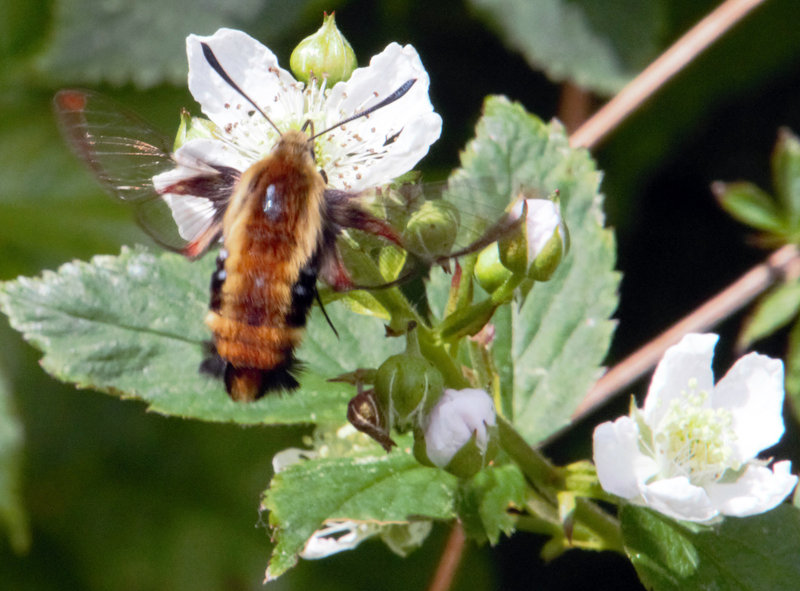|
Kim Fellows
The snowberry clearwing moth (Hemaris diffinis) is a member of the Sphingidea family of moths, commonly called "hummingbird," "sphinx," or "hawk" moths. In West Virginia, they are also known as “flying lobsters”! These moths are fairly large, with heavy bodies and a wingspan that can reach 5 cm or more in some species. Strong and fast fliers, members of the Sphingidae have a rapid wingbeat. Unusually for moths, the members of this family are day-flyers. The snowberry clearwing moth is more prevalent east of the continental divide. Its cousin, the hummingbird clearwing moth, has colouration that resembles a ruby throated hummingbird. These moths can be found in a wide variety of habitats, including streamsides, fields, gardens, and suburbs. This species mimics a hummingbird in its actions and a bumble bee in its colouration. And, like all pollinators, it unknowingly transfers pollen as it moves from flower to flower, feeding itself. The adult moths hover in front of a flower and sip nectar through their unfurled proboscis (tongue), just like a hummingbird. The proboscis rolls up when not in use. Native plants that you may see a hummingbird moth frequent include bluebells (Mertensia), bee balm (Monarda), honeysuckle (Lonicera), Verbena, Lantana, and snowberry (Symphoricarpos). All moths and butterflies have scales covering their wings, but the clearwing species lose many patches of scales on their first flight, thus rendering the wings clear or transparent. In most species, the larval stage is called a "hornworm" because the caterpillar's posterior end has a harmless hook or hornlike appendage protruding upward. Many gardeners will be familiar with the dreaded tomato hornworm, which is the caterpillar stage of the beautiful five-spotted hawkmoth. Depending on the species, these caterpillars may eat the leaves of viburnums, honeysuckles, snowberry, blueberries, and members of the rose family. The clearwing moths pupate in a thin cocoon in leaf litter, where they remain during the cold months, emerging as moths in late spring or early summer.
Photo: Snowberry Clearwing Sphinx Moth (Hemaris diffinis), Ontario, Canada. By Wayne W G. CC BY-NC-ND 2.0. |

